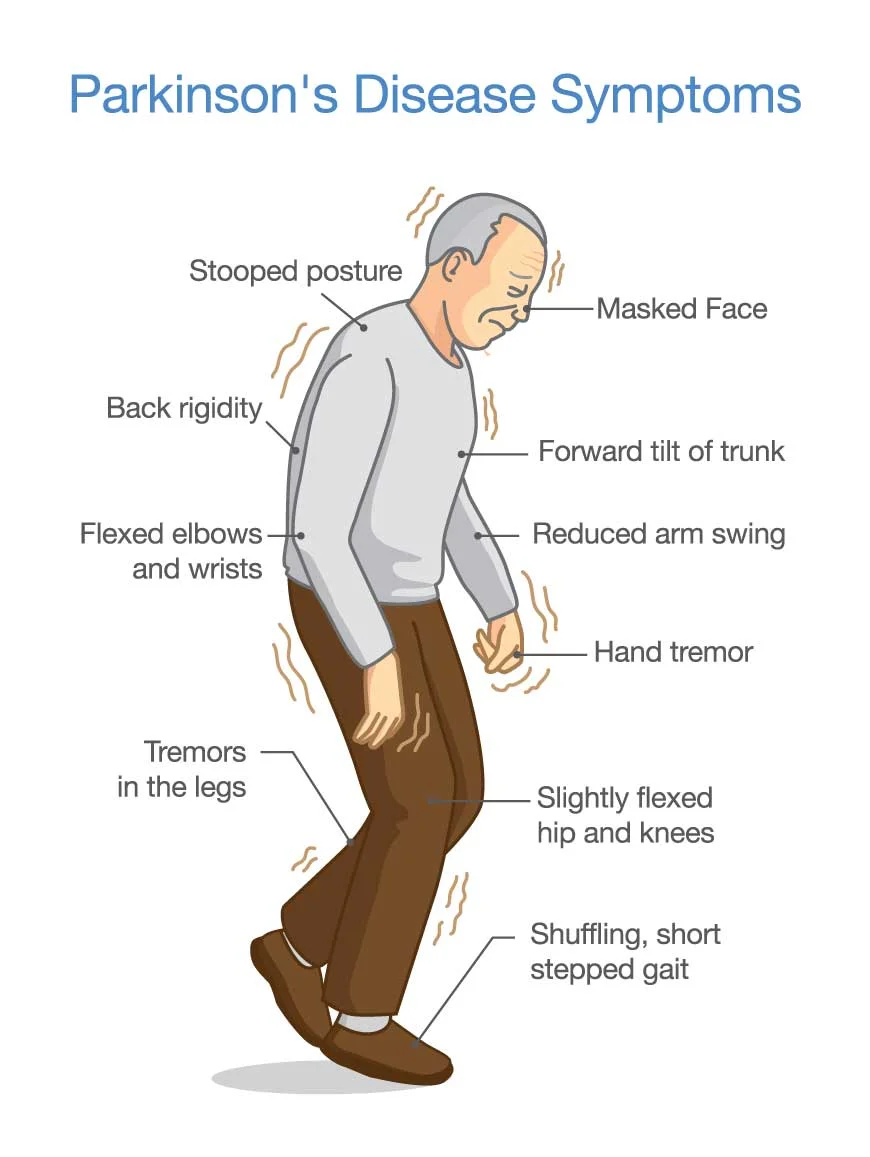PEMF Therapy for Parkinson’s disease

Parkinson’s disease is a progressive nervous disorder that causes difficulty in movement, stiffness, shaking, and coordination. The most common symptom is having tremors, which gradually increases in patients.
Also, the disorder leads to slow movement and body stiffness. At the beginning of Parkinson’s disease, your arms may not swing when walking, your face might be expressionless, your speech may become slurred. Its symptoms worsen as the disease progresses with time.
Though Parkinson’s disease cannot be completely cured, the right treatment can help reduce the symptoms.
What Causes Parkinson’s disease?
Parkinson’s disease is usually caused by the breakdown of specific neurons or nerve cells. Most symptoms are due to a loss of never cells that are responsible for generating a chemical messenger in the brain, known as dopamine. When the brain has insufficient dopamine, it leads to impaired movement and abnormal brain activity.
The primary cause of Parkinson’s disease is still not known; however, multiple factors appear to play a role. Some of the possible reasons are:
Genes
Scientists claim that specific gene mutations may cause Parkinson’s disease. This cause is not common and rarely happens, especially with family members already affected by the disease. On the other hand, certain gene variations increase the risk of Parkinson’s condition with a comparatively low risk of this disease for each of these genetic markers.
Environmental Triggers
Another cause could be the exposure of specific toxins present in the atmosphere, but the risk is small compared to other causes. Experts suggest that Parkinson’s disease brings several changes in the brain. Though it’s not clear why these changes happen, these changes are:

Presence of Lewy Bodies
Chunks of some compounds within brain cells are microscopic markers of this neuro disorder. These clumps are known as Lewy bodies. According to researchers, these Lewy bodies play a significant part in causing Parkinson’s disease.
Alpha-synuclein found within Lewy Bodies
There are several compounds present in the Lewy bodies, researchers suggest that alpha-synuclein has an important role to play. This natural protein is found in all Lewy bodies in a clustered form and cannot be damaged by cells. Currently, scientists are paying more attention to this cause.
What are the Risk Factors of Parkinson’s Disease?
Following are the risk factors for Parkinson’s disease:
Heredity
When a close relative has this disorder, the chances of having Parkinson’s disease are higher. On the bright side, risks are still low if you don’t have many relatives with Parkinson’s disorder.
Age
It usually occurs in middle or late life, so young adults don’t have to worry about it. Parkinson’s disease is developed around the age of 60 or more.
Exposure to Toxins
More exposure to pesticides and herbicides can increase the risk of having this neuro disease.
Sex
Gender also matters in the case of Parkinson’s disease. Studies show that men are more likely to have this problem than females.
PEMF Therapy for Parkinson’s disease
How Does PEMF Work?
One of the best and most effective ways to reduce Parkinson’s disease is by using a PEMF device. Pulsed Electromagnetic Field Therapy, PEMF, is a safe Parkinson’s disease treatment. It is the application of non-invasive pulsating magnetic fields for regenerative and functional improvement therapy purposes.
When pulsed electromagnetic fields are applied to the brain, known as transcranial magnetic stimulation, enhances oxygenation in cells by boosting blood circulation to the brain. As a result, increased and faster natural cellular repair and regeneration take place.
Generally, PEMF therapy devices have evolved in the last 6 decades of studies, hundreds of clinical trials, and thousands of researches. Several terms have been suggested for defining the brain-stimulating magnetic fields, including – TMS (transcranial magnetic stimulation), TPEMF (transcranial PEMF), EMS (electromagnetic stimulation), and rTMS (repetitive transcranial magnetic stimulation).
All of these technologies are similar and differ only in coil design and intensity. The following research on Parkinson’s disease treatment involves all the above mentioned electromagnetic therapy technologies.
PEMF Therapy Research for Parkinson’s disease
Multiple PEMF therapy research exhibit enhanced movement and cognitive abilities. This therapy has a molecular activity and noticeably alters the action of radicals. There are low aging-related degeneration and less inflammation with a low rate of free radicals. Apart from that, it has shown to reduce depression and boost mental health.
Pulsed Electromagnetic Field Therapies have increased the healing possibility for this disease and help for neurorehabilitation and physical therapy. Studies on the effects of PEMF on Parkinson’s disease has been available since the 90s.
Dr. Reuven Sandyk from the Department of Neuroscience at the Institute of Biomedical Engineering and Rehabilitation Services of Touro College treated a 73-year-old Parkinson’s disease patient in 1996. The patient had a 10-year history of this disorder and showed complete disappearance of freezing of gait, hesitation, and PD tremors within a week of PEMF therapy. He also retained his ability to write and draw better.
This study revealed that AC PEMF theory improves olfactory function. It was also noticed that 7 Hz stimulation was useful in solving olfactory dysfunction. Yawning and smell are usual indicators of the status of Parkinson’s disease, and improvements in these functions show that this treatment is effective. Dr. Sandyak is considered as one of the critical scientists as he has published several helpful studies on PEMF therapy. He also discovered progress in restless leg syndrome and in speech impairment, among other advantages.
A joint review study on the therapeutic applications of electromagnetic therapy took place in 2015. The research involved reputed scientists of Mexico, UK, and Italy, who concluded that PEMF therapy recover symptoms like movement slowness, tremor, and walking difficulty.
In 2015, another study was carried out, which included 470 patients of PD and it was noted that rTMS improves tremor control and motor symptoms in PD patients.
The advantages of PEMF therapy were collectively studied by the universities in Denmark in 2018. The study involved 30-minute treatment using a 50 Hertz PEMF field for 8 weeks and revealed that PEMF therapy has a significant impact on patients of PD. The most effective results were noticed in mild Parkinson’s. There is a potential that PEMF therapy would have been more effective if 10 Hertz was used for neural stem cell stimulation, according to NASA.
Sentient Element is the perfect and ideal PEMF Device
It is concluded that Pulsed Electromagnetic Field Therapy is highly effective for treating Parkinson’s disease.
The Sentient Element offer one of the most affordable and powerful and portable PEMF devices, letting you choose from low-intensity sessions to short, long, and deep penetrating high-intensity sessions.
So, if you are looking for a reliable and high-quality PEMF device, then the Sentient Element is a trustworthy platform.
Interested to buy Sentient Element? Click here
RELATED POSTS